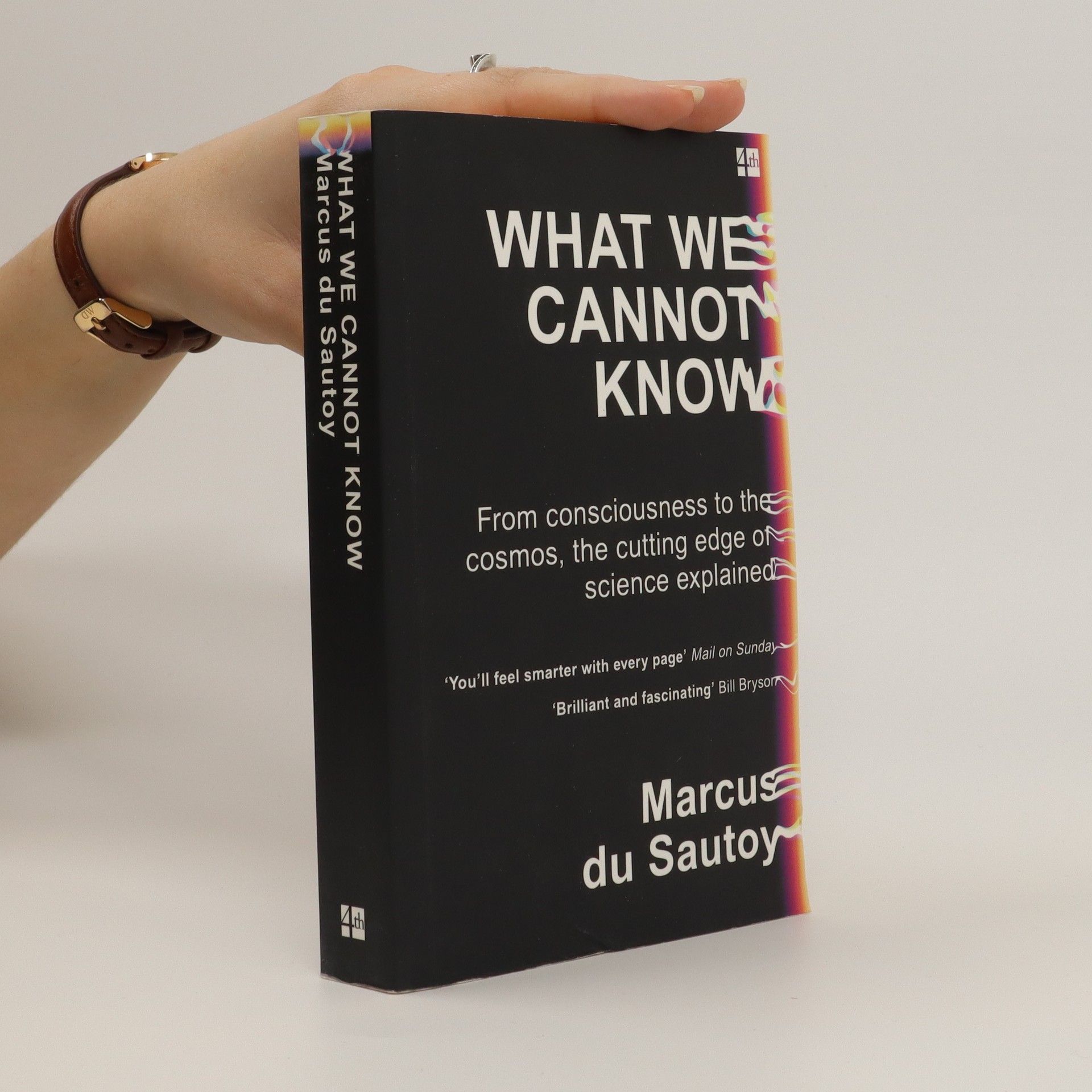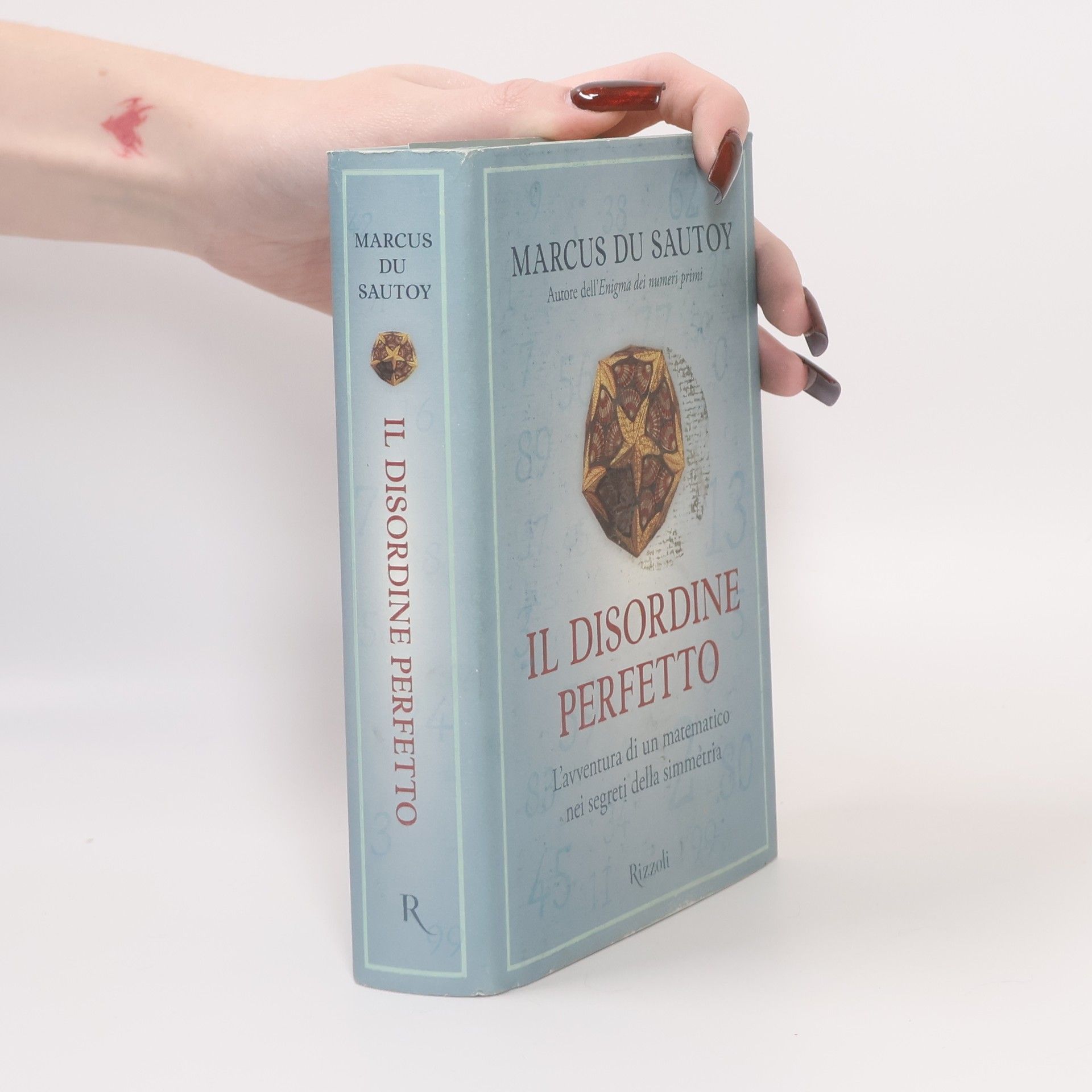L'enigma dei numeri primi
l'ipetesi di Riemann, il più grande mistero de la matematica
- 584pagine
- 21 ore di lettura
Questo autore esplora il mondo dei numeri e della matematica con una passione avvincente che dà vita a concetti astratti per il lettore comune. Il suo lavoro approfondisce le domande fondamentali dell'esistenza e il nostro posto nell'universo, concentrandosi spesso sull'eleganza e la bellezza dei principi matematici. Rende le idee complesse accessibili in modo chiaro e coinvolgente, invitando i lettori in un viaggio di scoperta in cui la matematica diventa una chiave per comprendere il mondo che ci circonda. La sua scrittura è una celebrazione della curiosità umana e delle infinite possibilità della comprensione scientifica.







l'ipetesi di Riemann, il più grande mistero de la matematica
L'avventura di un matematico nei segreti della simmetria
Nel 1770, il quattordicenne Mozart si trovava in Italia assieme a suo padre. Il Giovedì Santo, andò ad assistere alla funzione celebrata nella Cappella Sistina per ascoltare il celebre Miserere di Allegri, l'incantevole pezzo corale che, per esplicito decreto del papa, poteva essere eseguito solo a Roma durante la Settimana Santa. Il ragazzo ne rimase talmente colpito che, tornato nel suo alloggio scrisse di getto, basandosi su quanto ricordava, l'intero spartito a nove voci. Fu solo la prodigiosa memoria del giovane musicista a rendere possibile questa impresa? Ne "Il disordine perfetto", Marcus du Sautoy mostra che l'atto di ricrearlo non fu tanto un merito della sua memoria, quanto piuttosto una conseguenza della straordinaria capacità di Mozart di cogliere la struttura logica interna della composizione, di catturarne la simmetria e di sfruttarla per ricostruire il pezzo a partire da quegli elementi che gli erano rimasti impressi. Ma quello di Mozart è solo uno degli infiniti esempi della potenza della simmetria, una caratteristica che pervade e anima ogni aspetto del mondo naturale e umano: dalle molecole di carbonio alle pietre di Stonehenge, dai mosaici dell'Alhambra ai codici informatici, dai virus alla musica fino al funzionamento stesso della mente umana. Nel suo libro, du Sautoy ci propone un viaggio nell'universo della simmetria e delle sue varie sfaccettature che è, al contempo, un viaggio nell'avvincente lavoro svolto dalla matematica per comprenderla, interpretarla e classificarla.
Britain's most famous mathematician takes us to the edge of knowledge to show us what we cannot know.
Zeta functions have been a powerful tool in mathematics over the last two centuries. This book considers a new class of non-commutative zeta functions which encode the structure of the subgroup lattice in infinite groups. It explores the analytic behavior of these functions together with an investigation of functional equations. The book examines many important examples of zeta functions, providing an important database of explicit examples and methods for calculation.
Brilliant and fascinating. No one is better at making the recondite accessible and exciting. Britain's most famous mathematician takes us to the edge of knowledge to explore what lies beyond our understanding. Is the universe infinite? What occurred before the Big Bang? Where is human consciousness located in the brain? Are there undiscovered particles beyond the Higgs boson? In a world where science dominates headlines with breakthroughs and once-inscrutable mathematical problems are solved, we must ask: are there limits to our discoveries about the physical universe? This personal journey delves into the boundaries of knowledge, as Marcus du Sautoy engages with leading experts in quantum physics, cosmology, sensory perception, and neuroscience. He navigates the complexities of current understanding, grappling with contradictory narratives and cutting-edge data. Will we ever know everything, or are there realms of research that will always elude human comprehension? If so, how do we reconcile our existence in a universe filled with mysteries? This thought-provoking expedition challenges us to consider the extent of our knowledge and whether there are indeed things we cannot know. Prepare to journey to the edge of knowledge and discover the limits of human understanding.
“An engaging voyage into some of the great mysteries and wonders of our world." --Alan Lightman, author of Einstein’s Dream and The Accidental Universe “No one is better at making the recondite accessible and exciting.” —Bill Bryson Brain Pickings and Kirkus Best Science Book of the Year Every week seems to throw up a new discovery, shaking the foundations of what we know. But are there questions we will never be able to answer—mysteries that lie beyond the predictive powers of science? In this captivating exploration of our most tantalizing unknowns, Marcus du Sautoy invites us to consider the problems in cosmology, quantum physics, mathematics, and neuroscience that continue to bedevil scientists and creative thinkers who are at the forefront of their fields. At once exhilarating, mind-bending, and compulsively readable, The Great Unknown challenges us to consider big questions—about the nature of consciousness, what came before the big bang, and what lies beyond our horizons—while taking us on a virtuoso tour of the great breakthroughs of the past and celebrating the men and women who dared to tackle the seemingly impossible and had the imagination to come up with new ways of seeing the world.
Will a computer ever compose a symphony, write a prize-winning novel, or create a masterpiece? As humans, we possess a remarkable ability to produce art that elevates and transforms our existence. However, advancements in AI are challenging traditional notions, revealing that many tasks can be performed as well, if not better, by machines. This raises the question: can machines truly be creative? Can they learn from the art that resonates with us and discern the difference between the extraordinary and the ordinary? In this exploration of creativity, the author delves into the nature of artistic expression while providing insights into how algorithms function and the mathematical principles that guide them. He investigates the emotional responses we have to art, considering how much of it stems from our brains responding to patterns and structures. The discussion extends to creativity in mathematics, art, language, and music, probing how soon machines might produce original creative works and whether this could inspire greater imagination in humans. The outcome is a thought-provoking examination of both AI and the fundamental essence of humanity.
Recounts the history of prime numbers, (numbers divisible only by one and themselves), which has implications beyond pure mathematics. Euclid, Ramanujan, Odlyzko, and the formation of RSA encryption are discussed, as well as the state of contemporary research on the topic. Originally published: London: Fourth Estate, 2003.
How do you remember more and forget less? How can you earn more and become more creative just by moving house? And how do you pack a car boot most efficiently? This is your shortcut to the art of the shortcut. Mathematics is full of better ways of thinking, and with over 2,000 years of knowledge to draw on, Oxford mathematician Marcus du Sautoy interrogates his passion for shortcuts in this fresh and fascinating guide. After all, shortcuts have enabled so much of human progress, whether in constructing the first cities around the Euphrates 5,000 years ago, using calculus to determine the scale of the universe or in writing today's algorithms that help us find a new life partner. As well as looking at the most useful shortcuts in history - such as measuring the circumference of the earth in 240 BC to diagrams that illustrate how modern GPS works - Marcus also looks at how you can use shortcuts in investing or how to learn a musical instrument to memory techniques. He talks to, among many, the writer Robert MacFarlane, cellist Natalie Clein and the psychologist Suzie Orbach, asking whether shortcuts are always the best idea and, if so, when they use them. With engaging puzzles and conundrums throughout to illustrate the shortcut's ability to find solutions with speed, Thinking Better offers many clever strategies for daily complex problems.
As a species, we have an extraordinary ability to create works of art that elevate, expand and transform what it means to be human. The novels of Henry James can communicate the inner world of one human being to another. The music of Wagner or Schubert takes us on an emotional rollercoaster ride as we give ourselves up to their sublime sounds. These are the expressions of what Marcus du Sautoy calls 'the creativity code'. Yet some believe that the new developments in AI and machine learning are so sophisticated that they can learn what it means to be human - that they can crack the code. - Technology has always allowed us to extend our understanding of being human. But will the new tools of AI allow to us to create in different ways? - Could recent developments in AI and machine learning also mean that it is no longer just human beings who can create art? - And creativity, like consciousness, is one of those words that is hard to pin down: what is it that we are challenging these machines to do? In The Creativity Code, Marcus du Sautoy examines what these new developments might mean, for both the creative arts and his own subject, mathematics. From the Turing test to AlphaGo, are there limits to what algorithms can achieve, or might they be able to perfectly mimic human creativity? And what's more, could they help Marcus to see more deeply into the complex mathematical problems with which he so often wrestles?